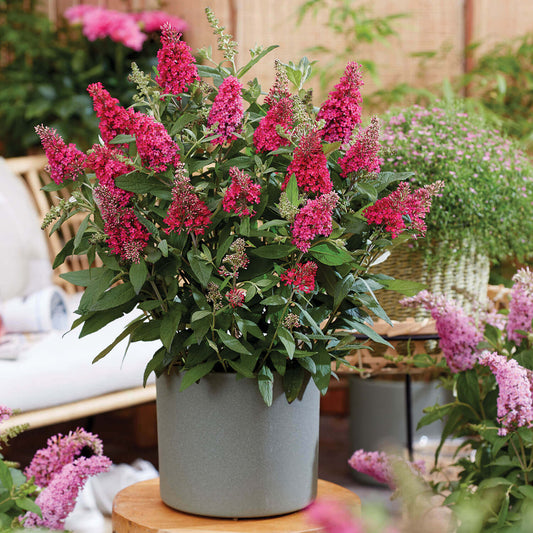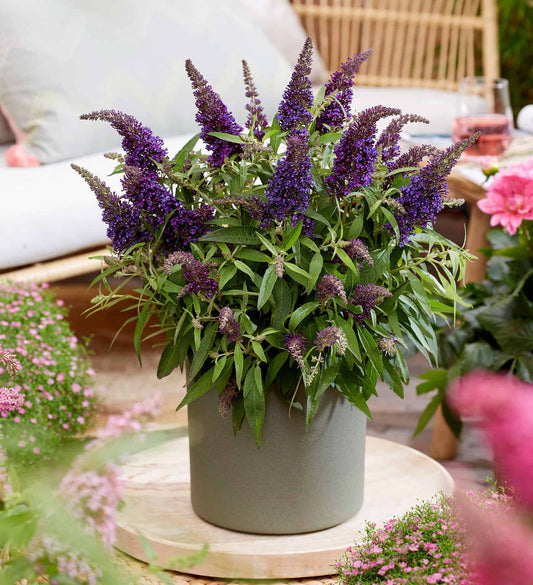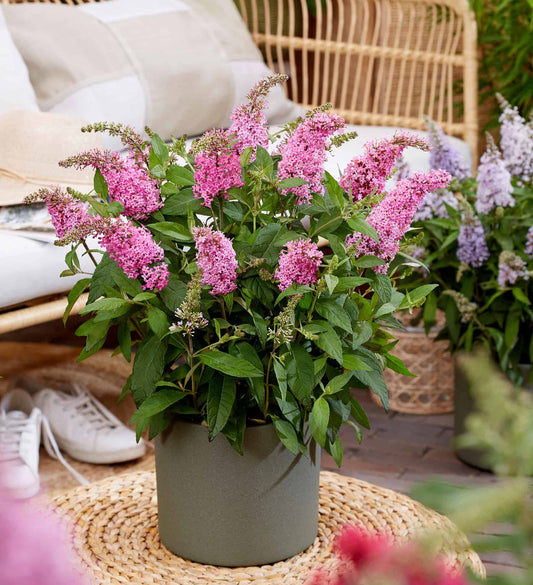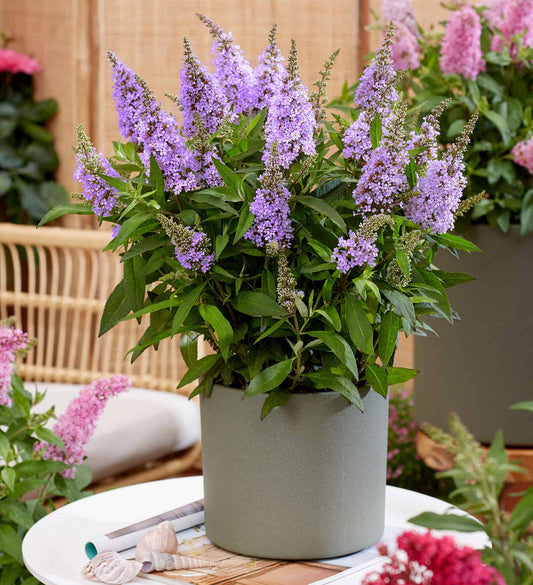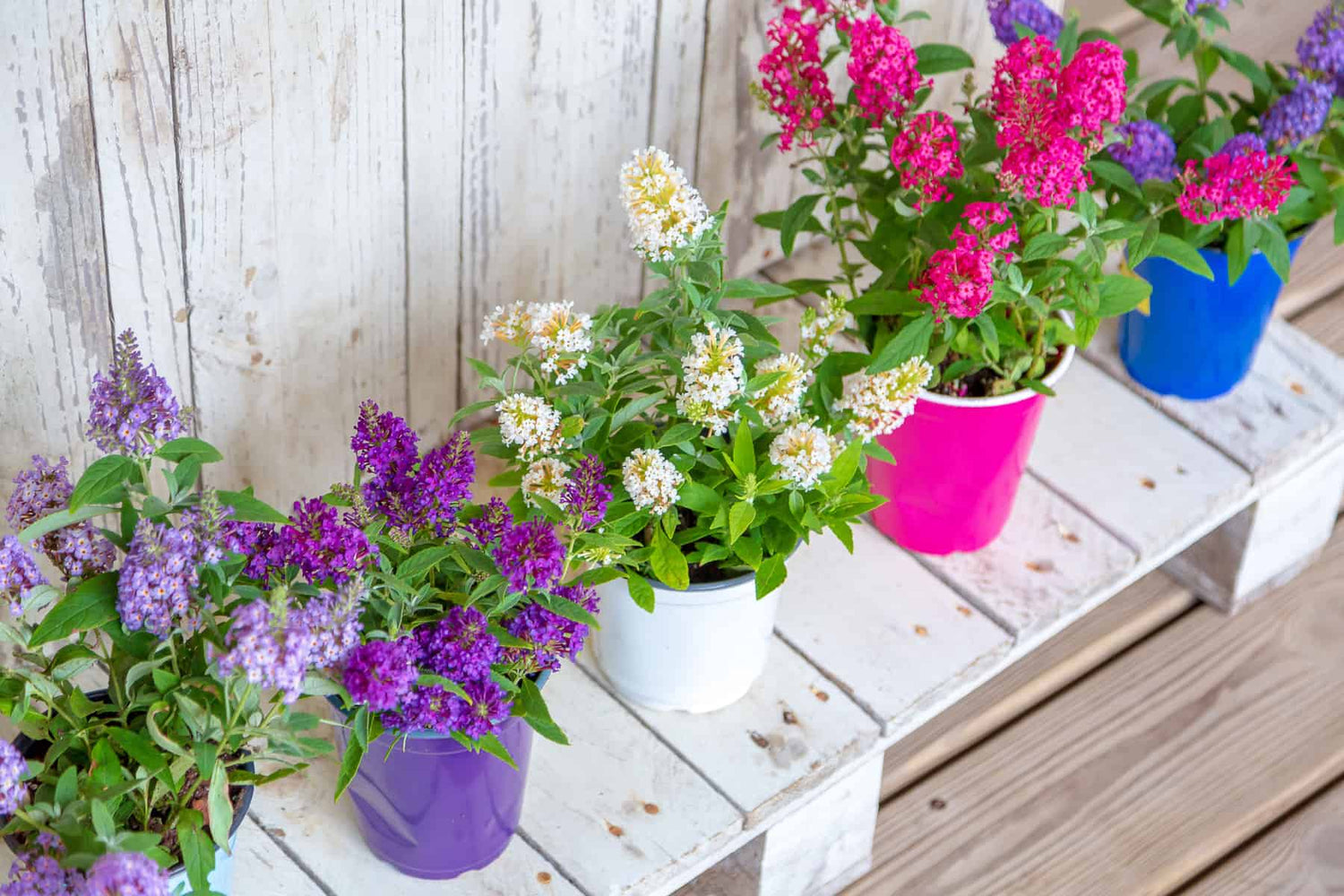Why Plant Buddleia or Butterfly Bushes?
By Kim Toscano
Whether you are looking for low-maintenance color or want to attract butterflies to the garden, you can’t go wrong with buddleia or butterfly bushes. There’s a whole lot to love about these vibrant shrubs—from repeat blooming to pollinator paradise. Here are just a few reasons why gardeners love to plant buddleia.

All About Those Blooms
Butterfly bushes bloom in a range of jewel tones, from ruby red to deep royal purple. Soft pink, lilac, and ivory hues fill the spectrum. The flowers are produced on dense spikes, each holding hundreds of tiny blooms on panicles reaching up to 12 inches long. Butterfly bushes have lasting flower power, with the first blooms opening in late spring and new flowers arising all summer, adorning shrubs well into autumn.
Buddleia’s fragrant blooms make for delightful cut flowers. Butterfly bush flowers open from the bottom of the panicle up toward the tip. Harvest flowers when the bottom half of the buds have opened. The rest of the flower buds will open in the vase. Cut flowers in the morning and place them in a vase of water as soon as possible.
With a name like butterfly bush, it is no surprise that buddleia blossoms are butterfly magnets. These floriferous shrubs have long served as the focal point for butterfly and pollinator gardens. Skippers and sulfurs are drawn to the irresistible nectar, as are monarch and swallowtail butterflies. Also, watch for zebra, eastern-tailed blue, and painted lady butterflies flitting among the blooms. You’ll find bumble bees, honeybees, and the occasional hummingbird sipping the sweet nectar alongside butterflies.

Easy to Grow and Maintain
Butterfly bushes are tough plants. They thrive in a variety of soil types and habitats. Once established, plants have low water requirements and are pretty tolerant of heat and humidity. However, they don’t like to have their roots sitting in water, nor are they tolerant of drought. Provide plants with a sunny location and well-draining soil, and your butterfly bushes will thrive for years to come.
Buddleia is a fast-growing deciduous shrub. In colder regions (Zones 5-6), plants typically behave more like perennials, dying back to the ground each winter and producing new shoots in spring. Despite this dieback, plants quickly fill out to form a full canopy and plenty of blooms. In fact, in areas where plants do not die back, butterfly bushes are commonly pruned back hard in late winter to control their size and encourage an abundance of flowers.
Gardeners also love to plant buddleia because they are virtually pest-free. No serious insect pests or disease problems affect butterfly bush. They are also seldom bothered by deer or rabbits.

Added Benefits of Butterfly Candy Buddleia
How do you make a great plant even better? By reducing its size for today’s small gardens. The Butterfly Candy Buddleia series includes five varieties with a compact habit, reaching just 2-3’ tall and wide when mature. This makes them widely adaptable to gardening in small spaces and perfect for growing in containers. Unlike taller varieties, these compact buddleias also work great when massed in borders. And because they naturally remain small, there is no need to prune Butterfly Candy Buddleias to manage plant size.
Finally, no seeds or fruit have been observed to date on the Butterfly Candy Buddleias. This is important because butterfly bushes are considered invasive in some states. Planting seedless or sterile varieties is one way to combat this spread. Gardeners can also deadhead plants routinely to remove flower heads before they can scatter seeds. Deadheading has the benefit of encouraging more blooms for enjoyment by butterflies and gardeners alike.


